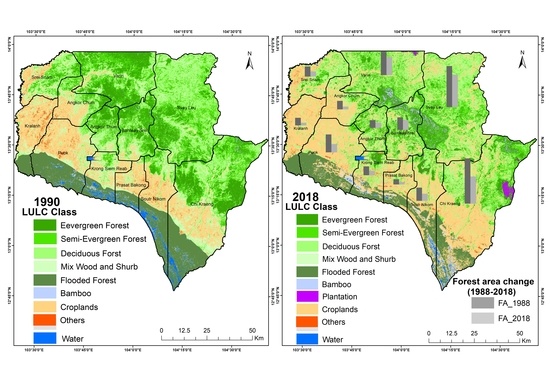Applications of the Google Earth Engine and Phenology-Based Threshold Classification Method for Mapping Forest Cover and Carbon Stock Changes in Siem Reap Province, Cambodia
Abstract
Share and Cite
Venkatappa, M.; Sasaki, N.; Anantsuksomsri, S.; Smith, B. Applications of the Google Earth Engine and Phenology-Based Threshold Classification Method for Mapping Forest Cover and Carbon Stock Changes in Siem Reap Province, Cambodia. Remote Sens. 2020, 12, 3110. https://doi.org/10.3390/rs12183110
Venkatappa M, Sasaki N, Anantsuksomsri S, Smith B. Applications of the Google Earth Engine and Phenology-Based Threshold Classification Method for Mapping Forest Cover and Carbon Stock Changes in Siem Reap Province, Cambodia. Remote Sensing. 2020; 12(18):3110. https://doi.org/10.3390/rs12183110
Chicago/Turabian StyleVenkatappa, Manjunatha, Nophea Sasaki, Sutee Anantsuksomsri, and Benjamin Smith. 2020. "Applications of the Google Earth Engine and Phenology-Based Threshold Classification Method for Mapping Forest Cover and Carbon Stock Changes in Siem Reap Province, Cambodia" Remote Sensing 12, no. 18: 3110. https://doi.org/10.3390/rs12183110
APA StyleVenkatappa, M., Sasaki, N., Anantsuksomsri, S., & Smith, B. (2020). Applications of the Google Earth Engine and Phenology-Based Threshold Classification Method for Mapping Forest Cover and Carbon Stock Changes in Siem Reap Province, Cambodia. Remote Sensing, 12(18), 3110. https://doi.org/10.3390/rs12183110








